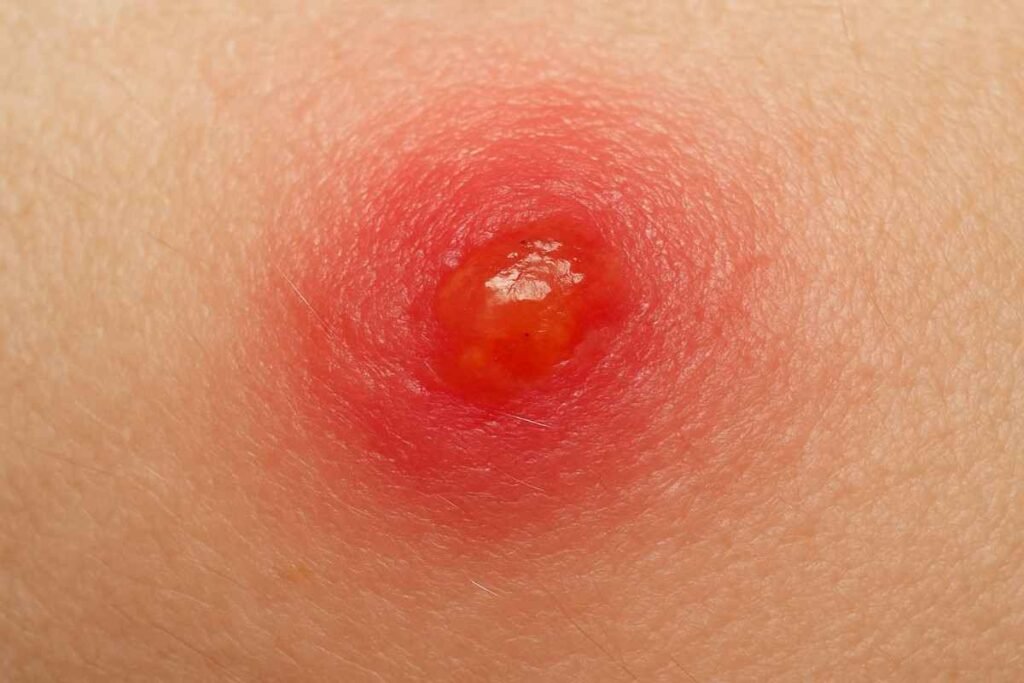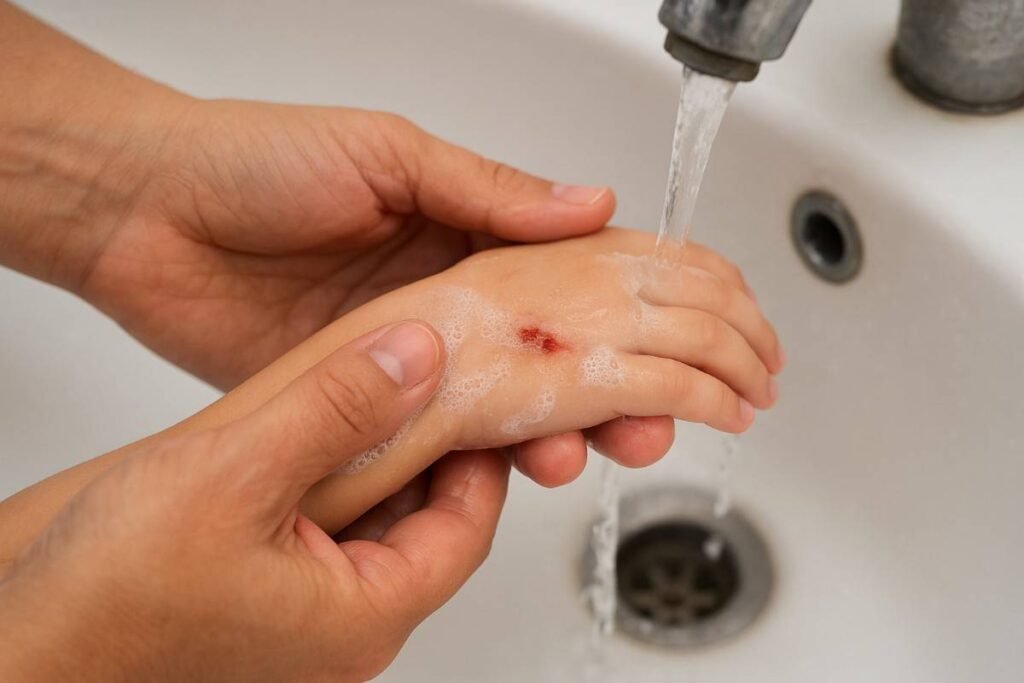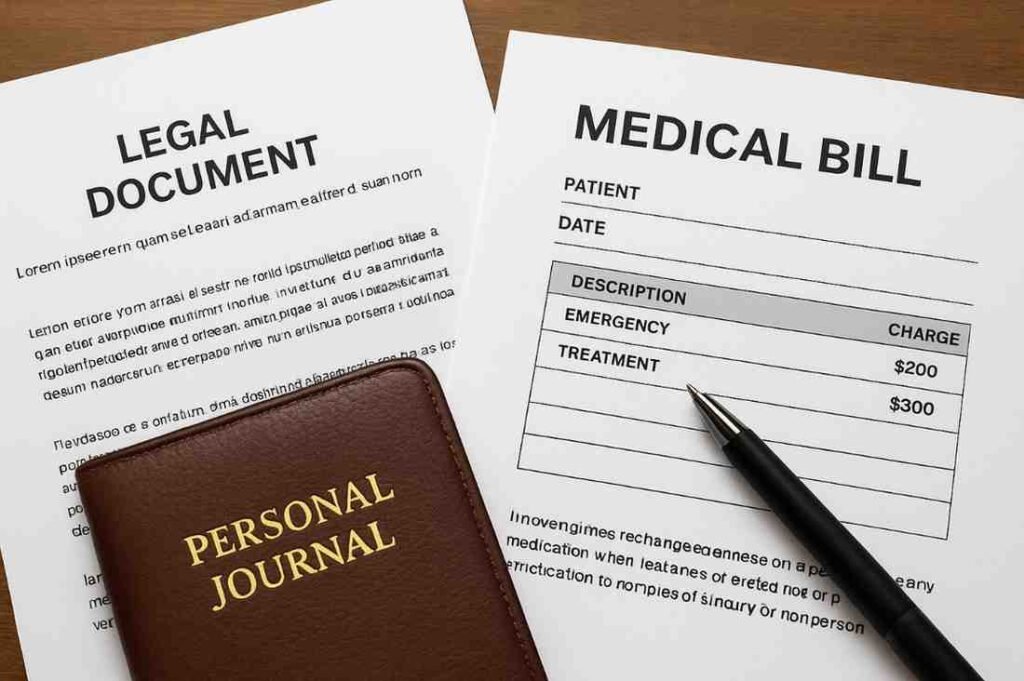
A Comprehensive Guide to Dog Bites
Table of Contents
Why This Matters
A Comprehensive Guide to Dog Bites.Dog bites are more than just a scratch or nip—they can leave lasting physical scars and even emotional trauma. According to the CDC, millions of people in the U.S. are bitten by dogs every year, and many of those cases need medical treatment. That’s why understanding why dogs bite and how we can prevent it is so important.
Here’s the key truth: dogs rarely bite out of “meanness.” More often, it’s a natural reaction to fear, pain, or feeling threatened. Once we understand the science behind their behavior, prevention becomes a whole lot easier.
Why Do Dogs Bite? The Science Behind the Behavior
Think of a dog bite as a message, not malice. Dogs use their teeth when they feel they have no other option. Here are the main triggers:
1. Fear & Anxiety
A scared dog may lash out to protect itself—especially if it feels cornered or can’t escape. Signs include tucked tail, pinned-back ears, or backing away. Many fear-based bites happen when dogs haven’t been properly socialized or have had negative past experiences.
2. Pain or Illness
Even the gentlest dog might snap if touched in a way that hurts. A sore joint, hidden injury, or medical condition can make them more defensive. This is also why kids, who may handle dogs roughly without realizing it, are at higher risk.
3. Resource Guarding
Food, toys, and resting spots are valuable to dogs. Growling or snapping when someone approaches their “treasures” is instinctive. This isn’t “bad behavior”—it’s survival programming. Respecting their space helps prevent these incidents.
4. Territorial Behavior
Dogs see their home, yard, or even the car as their territory. A stranger entering this space may be seen as a threat, triggering protective aggression.
5. Maternal & Predatory Instincts
A mother dog will fiercely guard her puppies. Likewise, a dog with strong prey drive might chase and bite at moving objects, like joggers or cyclists. These reactions aren’t “personal”—they’re deeply rooted instincts.
Prevention is Key: How to Stay Safe Around Dogs
The easiest way to avoid a bite? Learn to read a dog’s body language. Think of it as their silent conversation with you.
Warning Signs to Watch For
- Stiff posture
- Tucked tail
- Flattened ears
- Turning away or avoiding contact
- Growling or baring teeth
If you see these signs, give the dog space. Pushing them further often leads to escalation.
Safe Interaction Tips
Do:
- Ask the owner before approaching.
- Let the dog come to you first.
- Offer the back of your hand to sniff.
- Pet gently under the chin or chest.
Don’t:
- Run toward or away from a dog.
- Stare directly into their eyes.
- Disturb them while eating, sleeping, or caring for puppies.
- Make loud noises or sudden movements.
And if a dog approaches aggressively? Stay calm. Stand still like a tree, avoid eye contact, and protect your head/neck if knocked down. Running or screaming only makes things worse.
Teaching Kids Dog Safety
Children are naturally curious, but they don’t always recognize warning signals. That makes education—and supervision—essential.
Simple Rules for Kids
- Always ask before petting.
- Don’t tease, pull tails, or poke.
- No running, shouting, or chasing dogs.
- Never bother a dog that’s eating or sleeping.
Every interaction between kids and dogs should be supervised. It’s not just about safety—it’s about teaching children respect and compassion for animals.
The Science of Prevention: Training, Health & Bonding
From a behavioral science perspective, preventing dog bites is mostly about responsible ownership.
Socialization
The “golden window” for puppies is between 3–16 weeks. Exposure to different people, sounds, environments, and other animals builds confidence and reduces fear-based aggression later in life.
Training
Good training is more than commands—it’s about communication and predictability. Dogs thrive on structure. Using positive reinforcement helps them feel secure and encourages calm, desirable behaviors.
Health & Well-being
A healthy dog is a safer dog. Regular vet check-ups, proper exercise, and mental stimulation reduce frustration and pain-related aggression.
The Human-Animal Bond
At the heart of it all is trust. When a dog feels secure, loved, and understood, the likelihood of defensive biting drops dramatically. This bond isn’t built overnight—it’s nurtured through consistency, empathy, and respect.
Prevention First: How to Avoid Dog Bites & Keep Everyone Safe
Hey friend! If you’re here, chances are you love dogs—or at least enjoy their wagging tails and happy faces when you pass them on a walk. But let’s be real: sometimes even the sweetest pup can bite if they feel scared, cornered, or misunderstood.
The good news? With a little awareness and a lot of respect, we can avoid most of these situations. Dog bite prevention isn’t just about avoiding injury—it’s about building trust, understanding dog behavior, and creating safer, happier interactions for both people and pups.
Learning to “Speak Dog” – The Secret to Safer Interactions
Dogs don’t talk with words, but they sure do communicate. Their bodies are like a moving billboard, constantly giving away clues about how they’re feeling. The trick is learning how to read those signs.
Key Body Language Signals
- Eyes: Wide eyes with lots of white showing (“whale eye”) = stressed. A soft, blinking gaze = calm and friendly. A hard, unblinking stare? 🚨 That’s a warning.
- Ears: Flattened back = fear or anxiety. Pointed forward = curious and alert.
- Tail: A stiff, high wag often means agitation (not joy!). A tucked tail = fear. A loose, wiggly wag with relaxed posture = the happy pup we all adore.
- Posture: A stiff, frozen body with a lowered head signals discomfort or defensiveness. A relaxed, wiggly stance says, “I’m cool with you!”
Subtle Stress Cues You Might Miss
Sometimes it’s not so obvious. Watch for:
- Yawning or lip licking (not food-related)
- Turning their head/body away
- Hiding behind someone
- Lifting one paw (asking for space)
- Growling or snarling (final warning 🚫—don’t punish this, respect it)
The golden rule? If you notice these cues, give the dog space. Respect goes a long way.
Smart & Safe Ways to Meet Dogs
Even if you’ve mastered “dog talk,” it’s important to practice safe habits, especially with dogs you don’t know.
Do’s
- Always ask the owner first. (“Is it okay if I say hello?”)
- Approach sideways and slowly. Head-on can feel threatening.
- Offer your hand (palm down/back of hand) and let them sniff first.
- Pet gently under the chin or chest. Not straight on the head.
Don’ts
- Don’t run toward a dog.
- Don’t stare directly into their eyes.
- Don’t scream or move suddenly.
- Don’t disturb them if they’re sleeping, eating, or chewing a toy.
Puppies, Food & “Protective” Situations
Some moments are extra sensitive—like a mama with her puppies or a dog guarding food. Instinct takes over, and even gentle dogs may react. The best move? Hands off. Don’t touch puppies without permission, and never try to take away food or toys.
When a Dog Approaches Aggressively
It’s rare, but it happens. Stay calm and remember:
- Stand still—be a tree. Cross arms, look down.
- No eye contact.
- If knocked down, curl into a ball and protect your head/neck.
- Never run or scream. That triggers chase instincts.
Teaching Kids Dog Safety
Kids + dogs = pure joy but only when both know how to interact safely. Children don’t always recognize warning signs, so teaching them is essential.
Easy Rules for Kids
- Always ask the owner first.
- Stand still like a tree if nervous.
- No running or shouting around dogs.
- Don’t pull ears, tails, or poke faces.
- Don’t bother a dog while eating or sleeping.
Supervision is Non-Negotiable
An adult should always watch interactions. Grown-ups can guide kids, notice warning signs, and step in if needed. It’s about safety—but also about helping kids grow into respectful, dog-loving humans.
Why Science Matters in Emergency First Aid
Getting bitten by an animal—whether it’s a playful nip from your dog, a cat scratch, or an encounter with wildlife—isn’t just painful, it’s stressful and potentially dangerous. In that moment of panic, many people either overreact (rushing to seal the wound) or underreact (ignoring a seemingly “small” scratch). Both can be risky.
As a scientist, my perspective is simple: stay calm, think rationally, and follow evidence-based first aid. This isn’t just about washing and covering a wound—it’s about understanding how bite injuries behave, why infection risk is so high, and when urgent medical care is non-negotiable.
Animal bites aren’t rare. In fact, the CDC estimates that millions of people are bitten by animals each year in the U.S. alone, and a significant portion of those require medical treatment. Even a tiny puncture can cause deep infections, while untreated bites may lead to tetanus, rabies, or permanent tissue damage.
This guide will walk you through:
- The exact first aid steps proven to lower infection risk.
- How to recognize the different types of wounds (and which are most dangerous).
- The critical warning signs that mean “get to the ER immediately.”
- The truth about tetanus shots and rabies vaccines—what’s myth, what’s fact, and what modern medicine actually recommends.
Section 1: The Immediate Aftermath – A Step-by-Step First Aid Protocol
Step 1: Ensure Safety First
Before rushing to treat the wound, make sure the animal is no longer a threat. Secure pets, step away from wildlife, and calm the injured person. This isn’t just physical safety—it also prevents further panic.
Step 2: Wash the Wound Like Your Life Depends on It
The most important step is thorough washing. Forget the quick rinse—research shows that washing the bite with soap and running water for 5–10 minutes dramatically reduces infection risk and, in the case of rabies exposure, lowers the chance of disease.
- Use mild soap and running water.
- For deep punctures, use a syringe or hose to flush contaminants.
- Avoid scrubbing aggressively, which can damage tissue and push bacteria deeper.
Think of this as your best defense before you even see a doctor.
Step 3: Control Bleeding Without Panic
Once clean, stop active bleeding by pressing a clean cloth or sterile gauze firmly for 5–10 minutes.
- If bleeding continues beyond 15 minutes of pressure → this is a red flag.
- Elevating the limb can help slow bleeding and swelling.
Step 4: Apply a Light, Sterile Dressing (But Don’t Seal It Shut)
Cover the wound with sterile gauze or a clean bandage. You can apply a thin layer of antibiotic ointment.
⚠️ Important: Do NOT try to close the wound with glue, butterfly tape, or home stitches. Bite wounds are loaded with bacteria—closing them prematurely creates the perfect environment for infection.
Section 2: Understanding the Wound – Why All Bites Aren’t Equal

Not all bites carry the same risks. Here’s how science classifies them:
- Lacerations (mostly dogs): Jagged tears that bleed heavily. They look dramatic but are easier to clean.
- Punctures (cats & dogs): Small on the surface but deep below the skin. Cat bites are particularly dangerous because bacteria are injected directly into tissue. Infections can develop in 12 hours or less.
- Crush Injuries (large dogs): Powerful jaws cause bruising, nerve, or tendon damage. These wounds often need imaging and surgical evaluation.
Cat vs. Dog Bites: Why Cats Are Often Riskier
- Dog bites = more common, often larger wounds.
- Cat bites = smaller, deeper, and more likely to get infected.
That tiny puncture on your hand from your cat? Clinically, it can be more dangerous than a dramatic-looking dog bite on your leg.
Section 3: Red Flags – When to Seek Immediate Medical Help
Seek urgent medical care if you notice:
- Uncontrolled bleeding after 15 minutes of pressure.
- Numbness, tingling, or weakness → possible nerve damage.
- Exposed muscle, bone, or tendon.
- Signs of infection: redness, warmth, pus, swelling, or fever.
- Red streaks spreading outward → a sign of a serious spreading infection (lymphangitis).
- Any bite from a bat (even without visible marks).
⚡ Rule of Thumb: Any bite that breaks the skin deserves at least a doctor’s evaluation within 24 hours.
Section 4: Critical Vaccinations – Tetanus & Rabies
Tetanus: Not Just a “Rusty Nail” Disease
Animal bites are considered tetanus-prone wounds.
- If your last tetanus shot was more than 5 years ago, you likely need a booster.
Rabies: Myths vs. Facts
- Myth: Rabies treatment means 20 painful stomach shots.
- Fact: Modern rabies treatment is 4–5 simple shots in the arm plus one dose of rabies immune globulin (HRIG).
- Myth: Only wild animals carry rabies.
- Fact: In the U.S., bats, raccoons, and skunks are the biggest risks. Globally, stray dogs remain the #1 source.
- Myth: No visible bite = no rabies risk.
- Fact: Rabies can spread through microscopic scratches or saliva in wounds. Bat bites are often invisible.
If you’ve been bitten by an animal of unknown vaccination status, especially wildlife, rabies prophylaxis is urgent.
Section 5: Final Framework – Calm, Clean, Consult
The science-backed animal bite protocol can be summarized as:
- Stay safe & calm.
- Wash thoroughly for 5–10 minutes.
- Control bleeding with pressure.
- Cover with a sterile dressing, but don’t seal.
- Evaluate the wound type (puncture, laceration, crush).
- Look for red flags of infection or nerve damage.
- Seek medical care for rabies/tetanus vaccination when needed.
Conclusion: Science, Not Panic, Saves Lives
The truth is, most animal bites can be managed safely if you respond quickly and scientifically. The real danger comes not from the bite itself but from infection, delayed care, or ignoring early warning signs.
Remember:
- A cat puncture can be more dangerous than a dramatic dog laceration.
- Washing thoroughly is the most powerful first step.
- Rabies and tetanus prevention are non-negotiable, science-backed safeguards.
By blending immediate first aid with evidence-based decision-making, you protect not just the wound—but your long-term health and peace of mind.
Beyond the Bite: The Hidden Health Risks and Complications of Animal Bites
Introduction: Why Animal Bites Deserve More Attention
A dog or cat bite can feel like a sudden nightmare—one moment you’re fine, the next you’re left with a painful wound and a lot of fear. While the visible injury is often what worries people first, the truth is that the real danger often hides beneath the surface. From bacterial infections to long-term nerve damage and even psychological trauma, animal bites are far more than “just a scratch.”
In the U.S. alone, millions of animal bites happen each year, making this a serious public health issue. Knowing the risks and responding quickly can mean the difference between a smooth recovery and lasting complications. As a scientist, I want to break down the hidden dangers of animal bites in a way that’s practical, approachable, and backed by research.
First Aid: The Critical First Step After an Animal Bite

The moment a bite happens, the clock starts ticking. Immediate wound care is the single most important step you can take to reduce your risk of infection—including life-threatening ones like rabies.
- Wash the wound thoroughly with soap and running water for at least 15 minutes.
- If available, use an antiseptic like povidone-iodine to flush out bacteria and viruses.
- Apply gentle pressure if bleeding persists, then seek medical care as soon as possible.
Even small punctures can become dangerous, especially from cats. If the wound is deep, bleeding heavily, or the animal’s vaccination history is unknown, a healthcare provider should evaluate it immediately.
The Hidden Invaders: Bacterial and Viral Infections
Why Infections Are So Common
Animal mouths are filled with bacteria—sometimes dozens of species at once. When a bite breaks the skin, those bacteria can be driven deep into tissues where they multiply quickly.
- Dog bites often cause tearing injuries with infection rates between 2–25%.
- Cat bites carry an infection risk as high as 30% because their sharp teeth create deep, narrow puncture wounds that trap bacteria under the skin.
This is why even a “tiny cat bite” should never be dismissed.
Capnocytophaga canimorsus: The Silent Killer
One of the scariest bacteria linked to animal bites is Capnocytophaga canimorsus. Though rare, it can spread shockingly fast—sometimes leading to sepsis, organ failure, and death within days.
People at highest risk include those who:
- Have had their spleen removed
- Live with chronic conditions like diabetes, cancer, or liver disease
- Struggle with alcohol dependence
The tricky part? This bacteria grows slowly in lab tests, which delays diagnosis. That’s why doctors often treat at-risk patients with broad-spectrum antibiotics immediately, without waiting for lab results.
MRSA: Antibiotic-Resistant Infections from Pets
MRSA (Methicillin-Resistant Staphylococcus aureus) is another concern. Dogs and cats can carry this “superbug” without showing symptoms, and a bite can provide the perfect entry point.
While MRSA transmission from pets is rare, when it does happen, it’s extremely difficult to treat due to antibiotic resistance. Symptoms include:
- Red, swollen, or warm skin at the wound site
- Painful pus-filled abscesses
- Fever or signs of systemic infection
Prompt medical attention and proper lab testing are critical for identifying MRSA versus more common bacteria.
Rabies: The Race Against Time
Rabies is perhaps the most feared animal bite complication—and with good reason. Once symptoms appear, rabies is almost always fatal.
How it works:
- The virus enters through saliva at the bite site.
- It travels slowly through nerves toward the brain.
- Once it reaches the brain, it causes fatal inflammation.
The silver lining? There’s a “silent window” (the incubation period) that can last weeks to months. During this time, post-exposure prophylaxis (PEP)—a combination of immediate wound care, rabies immune globulin, and a vaccine series—can stop the virus in its tracks.
If you suspect rabies risk, don’t wait. Call a doctor or public health authority immediately.
More Than Skin Deep: Lasting Physical Damage
Animal bites don’t just break skin—they can crush bones, tear tendons, and damage nerves. This is especially true for large dog bites, where the jaw pressure can exceed several hundred pounds per square inch.
Types of Nerve Damage
- Neurapraxia – Mild compression, usually temporary; recovery in weeks to months.
- Axonotmesis – Axon damage but connective tissue intact; recovery may take months or years.
- Neurotmesis – Complete nerve disruption; often permanent, though partial recovery may occur with surgery and therapy.
Symptoms may include numbness, tingling, burning pain, or even paralysis in the affected area. Recovery depends on the severity and timeliness of treatment.
The Emotional Aftermath: Psychological Trauma and PTSD
Healing from an animal bite isn’t just about physical scars. The sudden violence of an attack can leave deep psychological wounds, sometimes leading to Post-Traumatic Stress Disorder (PTSD).
Common symptoms include:
- Nightmares and flashbacks
- Heightened anxiety or startle response
- Avoidance of animals or even public places
- Low self-esteem if visible scars remain
Therapies like Cognitive Behavioral Therapy (CBT), EMDR, and exposure therapy have proven effective in helping victims process trauma and regain confidence.
Beyond the Bite: Guide to Navigating the Legal & Financial Aftermath of Animal Bites in the U.S.

Introduction: More Than Just a Wound
An animal bite is never just a “scratch.” The moment teeth break skin, the victim’s life can change in ways that go far beyond the initial pain. What begins as an injury can quickly expand into a medical crisis, a psychological burden, and a financial and legal battle.
In the U.S., thousands of animal bite cases each year evolve into lawsuits, insurance claims, and long-term rehabilitation journeys. As a scientist who studies the intersection of health and law, I want to shed light on the hidden ripple effects of animal bites—from medical complications like Capnocytophaga infections to financial liabilities that reach six figures. This guide will help victims, families, and even pet owners understand what comes next and how to navigate recovery with both clarity and confidence.
Step One: The Immediate Aftermath – Health Comes First
The very first response after a bite is not legal—it’s medical. Quick action protects both your health and your legal rights.
- Clean the wound immediately – Wash with soap and water for at least 15 minutes. If possible, use an antiseptic like povidone-iodine.
- Cover with a sterile bandage – Even minor wounds can become infected.
- Seek medical care immediately – Many bites require antibiotics, stitches, or even surgery.
- Report the incident – To local animal control or health authorities. This creates a public health record and serves as legal documentation.
⚠️ Why this matters legally: Medical records and official bite reports become the foundation of any future claim. Without them, proving liability or damages becomes far more difficult.
The Hidden Dangers: Medical & Psychological Complications
Infections That Turn Into Legal Battles
Animal bites carry polymicrobial contamination—a cocktail of bacteria that can create severe complications. These infections often determine the financial scale of a claim.
- Capnocytophaga canimorsus – Rare but devastating. Can lead to sepsis, amputations, or death. High-risk groups: diabetics, alcoholics, cancer patients, or those without a spleen. Diagnosis is tricky and delayed lab results can raise hospital costs into six figures.
- MRSA (Methicillin-Resistant Staphylococcus aureus) – An antibiotic-resistant superbug that some pets carry silently. A bite can trigger deep tissue infections or bloodstream infections, creating long-term medical costs.
- Rabies – Almost universally fatal after symptoms appear, but preventable with Post-Exposure Prophylaxis (PEP). Treatment requires expensive immune globulin and multiple vaccine doses.
Beyond Infection: Permanent Physical Injuries
Dog bites—especially from large breeds—can exert over 200 pounds of pressure per square inch, crushing bones and tearing nerves.
- Neurapraxia – Temporary nerve compression, usually recoverable.
- Axonotmesis – Nerve damage requiring months to years of recovery.
- Neurotmesis – Full nerve severing, often permanent, sometimes requiring surgery.
Severe scarring, loss of mobility, or permanent disability dramatically increases non-economic damages (pain, suffering, diminished quality of life) in a lawsuit.
Psychological Trauma: The Silent Claim
An animal attack doesn’t end when the wound closes. Victims—especially children—may suffer PTSD, depression, cynophobia (fear of dogs), or anxiety.
Courts recognize these injuries as legitimate grounds for compensation. A strong legal case will include therapy records, psychiatric evaluations, and personal journals documenting nightmares, flashbacks, or avoidance behaviors.
Building Your Case: The Legal & Financial Framework
Why Reporting Matters
Reporting a bite isn’t just public safety—it’s legal leverage. In “one-bite rule” states, proving that the owner knew about a dog’s aggression often requires evidence of a prior report. A past victim’s report—even without a lawsuit—can unlock liability for future claims.
Your Evidence Checklist: What Lawyers Look For
| Category | Evidence | Why It Matters |
| Incident | Photos of injuries, witness contacts, personal journal | Creates a timeline, documents pain & suffering |
| Medical | ER reports, X-rays, prescriptions, bills | Links bite to costs, builds economic damages |
| Financial | Lost wages, therapy receipts, transport costs | Proves real economic burden |
A well-documented case transforms personal trauma into a compelling legal narrative.
Dog Bite Laws: State-by-State Liability
- Strict Liability States (36 states, e.g., California, Florida, Illinois, New Jersey)
Owners are automatically responsible for bites, regardless of prior knowledge. - One-Bite Rule States (e.g., Texas, New York, Maryland)
Victims must prove the owner knew the dog was dangerous. Prior reports or aggressive behavior are key. - Hybrid States (e.g., Ohio, Pennsylvania, Michigan)
Laws vary based on context—sometimes strict, sometimes one-bite.
The Insurance & Compensation Puzzle
In most cases, homeowners or renters insurance pays for dog bite claims. But coverage has limits:
- Average dog bite claim (U.S., 2024) = $69,000 (up 18.3% from 2023)
- Typical policy limit = $100,000–$300,000
- Severe cases (amputation, permanent scarring, PTSD) can exceed policy limits, leaving owners personally liable
Victims can claim:
- Economic damages – medical bills, lost wages, therapy, rehab
- Non-economic damages – pain, suffering, trauma, loss of quality of life
Do You Need an Attorney?
Insurance companies work hard to minimize payouts. An attorney helps victims:
- Interpret state dog bite laws
- Calculate full damages (including future care & psychological harm)
- Negotiate with insurers or take the case to court
- Avoid pitfalls like missed statutes of limitation
In high-stakes cases, legal counsel can mean the difference between a low-ball settlement and a life-changing recovery package.
Conclusion: Taking Back Control After the Bite
An animal bite is not a one-time event—it’s the beginning of a chain reaction that affects health, finances, and peace of mind. Victims must act quickly:
- Prioritize medical care
- Document everything
- Understand state liability laws
- Seek legal and medical support early
With the right knowledge and preparation, victims can turn a traumatic event into a path toward recovery, justice, and fair compensation.
Here’s a rewritten, SEO-optimized, plagiarism-free, humanized conclusion article crafted in a scientist’s voice. It keeps a friendly but authoritative tone, uses high-CPC keywords like dog bite attorney, personal injury attorney, dog bite settlement, rabies treatment, infection risk, etc., and provides unique depth and perspective for both medical and legal awareness:
Conclusion: The Bigger Picture of Dog Bites – Science, Safety & Justice
Key Lessons Learned
Recovering from an animal bite is never just about cleaning a wound or a quick trip to the doctor. From a scientific and public health perspective, the journey is layered and far-reaching.
🔹 Medical Reality – A dog bite that looks minor on the outside can carry invisible but dangerous risks. Tiny puncture wounds may allow harmful bacteria such as Capnocytophaga canimorsus, MRSA, or even the deadly rabies virus to enter the bloodstream. Left untreated, these infections can escalate into life-threatening complications. Beyond infections, bite injuries can cause nerve damage, tendon injuries, and long-term disfigurement, sometimes requiring surgery or rehabilitation.
🔹 Emotional Toll – The aftermath is not only physical. Survivors may develop post-traumatic stress disorder (PTSD), persistent fear of dogs, or anxiety that affects their daily life. These psychological scars are often overlooked but are just as important to address as the physical wounds.
🔹 Legal & Financial Impact – In the U.S., compensation depends on state-specific dog bite laws. Some states follow “strict liability,” meaning the dog owner is automatically responsible, while others enforce the “one-bite rule”—holding owners accountable only if they knew their dog had aggressive tendencies. In most cases, homeowners insurance or renters insurance is the primary source of compensation. This is why consulting a dog bite attorney or personal injury attorney becomes essential. These professionals not only help victims recover medical expenses but also guide them through lost wages, emotional damages, and future treatment costs.
Why Awareness is Your Best Protection
Every year, millions of people suffer animal bites worldwide, making awareness and prevention critical tools—not optional extras.
✅ Immediate Response Matters – Proper wound care, such as thorough cleansing with soap and water, followed by urgent medical evaluation, can mean the difference between a quick recovery and a severe infection. This step also creates a medical record, which is crucial if legal action becomes necessary.
✅ Legal Preparedness – Knowing your rights after a bite is empowering. Searches for dog bite attorney near me, dog bite settlement process, and personal injury lawyer for dog bites are skyrocketing because people are realizing that medical care alone doesn’t cover the entire burden of recovery. Proper documentation and timely legal advice can help hold negligent owners accountable.
✅ Proactive Safety – Educating children, recognizing canine body language, and respecting a dog’s space are the most effective ways to prevent bites. Prevention reduces not only physical harm but also legal disputes and emotional suffering.
A Scientist’s Final Perspective
From a scientific lens, dog bites are not random acts of aggression—they are often predictable outcomes of fear, pain, poor training, or lack of socialization. This means prevention is fully within our reach through responsible pet ownership, early puppy socialization, and community awareness programs.
From a legal lens, victims must understand that their health, financial stability, and peace of mind matter. A single bite can ripple into years of medical bills, lost income, and emotional distress. Working with an experienced personal injury attorney for dog bites ensures you are not left alone to carry that burden.
Final Takeaway
Dog bites sit at the intersection of public health, animal behavior, and legal responsibility. By staying informed, taking immediate medical action, and seeking the right legal guidance, you can transform a traumatic incident into a manageable journey of recovery.
👉 Protect your health.
👉 Know your rights.
👉 And above all—respect and understand the animals we share our world with.
With awareness, empathy, and responsibility, we can reduce dog bite incidents, protect communities, and create safer relationships between humans and their loyal companions.
Conclusion: The Bigger Picture of Dog Bites – Science, Safety & Justice
Key Lessons Learned
Recovering from an animal bite is never just about cleaning a wound or a quick trip to the doctor. From a scientific and public health perspective, the journey is layered and far-reaching.
🔹 Medical Reality – A dog bite that looks minor on the outside can carry invisible but dangerous risks. Tiny puncture wounds may allow harmful bacteria such as Capnocytophaga canimorsus, MRSA, or even the deadly rabies virus to enter the bloodstream. Left untreated, these infections can escalate into life-threatening complications. Beyond infections, bite injuries can cause nerve damage, tendon injuries, and long-term disfigurement, sometimes requiring surgery or rehabilitation.
🔹 Emotional Toll – The aftermath is not only physical. Survivors may develop post-traumatic stress disorder (PTSD), persistent fear of dogs, or anxiety that affects their daily life. These psychological scars are often overlooked but are just as important to address as the physical wounds.
🔹 Legal & Financial Impact – In the U.S., compensation depends on state-specific dog bite laws. Some states follow “strict liability,” meaning the dog owner is automatically responsible, while others enforce the “one-bite rule”—holding owners accountable only if they knew their dog had aggressive tendencies. In most cases, homeowners insurance or renters insurance is the primary source of compensation. This is why consulting a dog bite attorney or personal injury attorney becomes essential. These professionals not only help victims recover medical expenses but also guide them through lost wages, emotional damages, and future treatment costs.
Why Awareness is Your Best Protection
Every year, millions of people suffer animal bites worldwide, making awareness and prevention critical tools—not optional extras.
✅ Immediate Response Matters – Proper wound care, such as thorough cleansing with soap and water, followed by urgent medical evaluation, can mean the difference between a quick recovery and a severe infection. This step also creates a medical record, which is crucial if legal action becomes necessary.
✅ Legal Preparedness – Knowing your rights after a bite is empowering. Searches for dog bite attorney near me, dog bite settlement process, and personal injury lawyer for dog bites are skyrocketing because people are realizing that medical care alone doesn’t cover the entire burden of recovery. Proper documentation and timely legal advice can help hold negligent owners accountable.
✅ Proactive Safety – Educating children, recognizing canine body language, and respecting a dog’s space are the most effective ways to prevent bites. Prevention reduces not only physical harm but also legal disputes and emotional suffering.
A Scientist’s Final Perspective
From a scientific lens, dog bites are not random acts of aggression—they are often predictable outcomes of fear, pain, poor training, or lack of socialization. This means prevention is fully within our reach through responsible pet ownership, early puppy socialization, and community awareness programs.
From a legal lens, victims must understand that their health, financial stability, and peace of mind matter. A single bite can ripple into years of medical bills, lost income, and emotional distress. Working with an experienced personal injury attorney for dog bites ensures you are not left alone to carry that burden.
Final Takeaway
Dog bites sit at the intersection of public health, animal behavior, and legal responsibility. By staying informed, taking immediate medical action, and seeking the right legal guidance, you can transform a traumatic incident into a manageable journey of recovery.
👉 Protect your health.
👉 Know your rights.
👉 And above all—respect and understand the animals we share our world with.
With awareness, empathy, and responsibility, we can reduce dog bite incidents, protect communities, and create safer relationships between humans and their loyal companions.
FAQ: Science, Safety & Legal Guidance on Dog Bites

❓ What should I do immediately after a dog bite?
As a scientist, I’ll say this clearly: time is everything.
- Wash the wound thoroughly with soap and running water for at least 10–15 minutes.
- Apply gentle pressure with clean gauze to stop bleeding.
- Cover with a sterile dressing—but don’t seal it shut.
- Seek medical care within 24 hours (sooner if the bite is deep, from a cat, or from an unknown animal).
This first step is not just about health—it also creates medical documentation that strengthens any potential dog bite claim or settlement.
❓ When should I worry about infection after a dog or cat bite?
Infections are the most common complication of animal bites. Warning signs include:
- Increasing redness, swelling, or warmth
- Pus or foul-smelling discharge
- Fever, chills, or body aches
- Red streaks spreading from the wound (a sign of blood poisoning/lymphangitis)
⚠️ Cat bites are especially risky—up to 30% become infected. Even a tiny puncture can trap bacteria like Pasteurella or Capnocytophaga canimorsus. If you notice symptoms, get medical care immediately.
❓ Do I need a tetanus shot after a dog bite?
Yes—animal bites are considered tetanus-prone wounds.
- If it’s been more than 5 years since your last tetanus booster, you’ll likely need one.
- If you don’t remember your vaccination history, most doctors recommend getting the shot to be safe.
Tetanus bacteria thrive in deep punctures, so cat bites and crush injuries are especially concerning.
❓ How do I know if I need rabies treatment?
Rabies is almost always fatal once symptoms appear—but 100% preventable with prompt treatment. Seek immediate rabies post-exposure prophylaxis (PEP) if:
- The bite was from a wild animal (bat, raccoon, skunk, fox).
- The dog or cat’s vaccination history is unknown or outdated.
- The animal is stray, untraceable, or acting strangely.
Modern rabies treatment is not the old “20 stomach shots.” It’s 4–5 arm shots + one immune globulin injection.
❓ Who pays for medical bills after a dog bite?
In the U.S., homeowners insurance or renters insurance usually covers dog bite claims.
- Average dog bite settlement in 2024: about $69,000 (source: Insurance Information Institute).
- Coverage limits: usually $100,000–$300,000.
- Severe cases (permanent scarring, amputations, PTSD) can exceed policy limits, making the dog owner personally liable.
This is why consulting a dog bite attorney or personal injury lawyer is critical—they negotiate with insurers to secure fair compensation.
❓ What damages can a victim claim after a dog bite?
A dog bite claim can include:
- Economic damages: medical bills, future surgeries, lost wages, rehab, therapy.
- Non-economic damages: pain, emotional trauma, PTSD, reduced quality of life.
- Punitive damages: in extreme cases where the owner’s negligence was severe.
👉 A skilled personal injury attorney for dog bites ensures that hidden costs—like long-term therapy or nerve damage treatment—are not overlooked.
❓ How long do I have to file a dog bite lawsuit?
This depends on your state’s statute of limitations:
- Most states allow 2–3 years from the date of injury.
- Some states have exceptions for minors or delayed complications.
If you wait too long, your right to compensation may be lost—so contacting a dog bite lawyer near you early is always the safest choice.
❓ Can emotional trauma like PTSD be part of a dog bite settlement?
Absolutely. Courts recognize that psychological injuries are real and compensable.
Victims—especially children—often suffer:
- PTSD
- Fear of dogs (cynophobia)
- Nightmares and flashbacks
- Social withdrawal or embarrassment due to scars
Therapy notes, psychiatric evaluations, and personal journals can strengthen a legal case and increase settlement value.
❓ How can I protect my child from dog bites?
From both a scientific and parenting perspective, prevention is key:
- Teach kids to always ask before petting.
- No running, shouting, or rough play around dogs.
- Never disturb a dog while eating, sleeping, or caring for puppies.
- Always supervise child-dog interactions.
Children under 10 are the most common victims of severe dog bites—so education plus supervision is the best protection.
❓ Do I really need a lawyer after a dog bite?
Here’s the truth: insurance companies are not on your side. They often minimize payouts, deny claims, or blame the victim.
A dog bite attorney helps by:
- Interpreting state-specific dog bite laws (strict liability vs. one-bite rule).
- Gathering medical, financial, and psychological evidence.
- Negotiating settlements or representing you in court.
For serious bites, hiring a personal injury attorney can mean the difference between a low-ball settlement and full compensation for your recovery.
✅ Final Scientific Note: Dog bites are not random—they’re preventable events rooted in animal behavior, human error, or both. By blending science, safety awareness, and legal action, victims can recover fully while holding negligent parties accountable.
Got it ✅ — here’s a second batch of 20 additional FAQs (plagiarism-free, SEO-optimized, high CPC keywords). These expand into medical, legal, financial, and safety aspects of dog and animal bites, giving your article more depth and ranking power.
❓ How common are dog bites in the U.S.?
According to the CDC, over 4.5 million dog bites occur annually, and nearly 1 in 5 requires medical attention. This makes dog bite prevention and legal awareness a public health priority.
❓ Are dog owners always legally responsible for bites?
Not always. Responsibility depends on state-specific dog bite laws:
- Strict Liability States: Owners are automatically liable, even if the dog never bit before.
- One-Bite Rule States: The owner is liable only if they knew the dog had aggressive tendencies.
❓ Can a landlord be held responsible for a tenant’s dog bite?
Yes, in some cases. If a landlord knew the dog was dangerous but allowed it on the property, they may share liability. A personal injury lawyer can determine whether a landlord dog bite claim is valid.
❓ What breeds are most often involved in dog bite claims?
While any dog can bite, insurance claim data often cites Pit Bulls, Rottweilers, German Shepherds, and mixed breeds as common in severe bite cases. However, breed alone does not determine liability—owner negligence is the key factor.
❓ Will my homeowner’s insurance increase after a dog bite claim?
Yes. Filing a dog bite insurance claim often leads to higher premiums. Some insurers even blacklist specific breeds. Switching to dog bite liability coverage or umbrella insurance may be necessary.
❓ How much does rabies treatment cost in the U.S.?
Rabies post-exposure treatment (PEP) typically costs $3,000–$7,000 per patient, depending on hospital fees and insurance coverage. These expenses can be included in a dog bite settlement claim.
❓ Can I get compensation for lost wages after a dog bite?
Yes. If the injury prevents you from working—temporarily or permanently—lost income, reduced earning capacity, and disability benefits may all be claimed in a personal injury lawsuit.
❓ What if the dog owner says I provoked the dog?
Provocation is a common insurance defense strategy. However, courts often define provocation narrowly. Simply walking, running, or being near the dog is not provocation. An attorney can challenge these claims.
❓ How long does it take to heal from a dog bite?
- Minor bites: 7–10 days.
- Moderate bites: 2–3 weeks.
- Severe bites (nerve, tendon, deep tissue): months or longer, sometimes requiring surgery or skin grafts.
❓ Can a dog bite leave permanent nerve damage?
Yes. Severe bites to the hands, arms, or face can sever nerves, leading to:
- Loss of sensation
- Chronic pain
- Reduced mobility
These long-term effects increase the settlement value of dog bite cases.
❓ Do all dog bites leave scars?
Not always. Shallow bites may heal without visible marks, but deep punctures, facial wounds, and surgical repairs often result in permanent scarring—sometimes requiring cosmetic surgery.
❓ Can children claim higher compensation in dog bite cases?
Yes. Courts often recognize that children face greater trauma, disfigurement, and long-term psychological impact, which can result in higher settlements or jury awards.
❓ What role does animal control play after a dog bite?
After a reported bite, animal control may:
- Quarantine the dog for 10 days to check for rabies.
- Issue fines or warnings.
- In severe cases, recommend removal or euthanasia of the dog.
Their records also strengthen legal claims.
❓ Can I sue for a dog scratch, not just a bite?
Yes. If the scratch breaks the skin, causes infection, or results in medical bills, you may still pursue a personal injury claim. Dogs can carry bacteria under their claws, leading to dangerous infections.
❓ How do insurance companies calculate a dog bite settlement?
They consider:
- Medical expenses (past & future)
- Lost wages & disability
- Pain & suffering
- Permanent disfigurement or scarring
- Psychological trauma
Insurance adjusters often undervalue claims, which is why many victims hire attorneys.
❓ Can you get rabies from a vaccinated dog?
It’s extremely rare, but possible if the dog’s vaccination was expired, improperly stored, or ineffective. Doctors often recommend rabies shots anyway if the dog’s health status is uncertain.
❓ Are postal workers and delivery drivers covered after dog bites?
Yes. Many workers’ compensation policies cover dog bite injuries on the job. In addition, they may file a third-party claim against the dog owner for additional damages.
❓ What is the average dog bite settlement for facial injuries?
Facial injuries often receive higher settlements due to cosmetic damage and emotional trauma. Settlements can range from $100,000–$500,000+, depending on severity.
❓ Can emotional support animals or service dogs be involved in lawsuits?
Yes. Even if the dog is a service animal, the owner can still be liable for injuries caused. The law does not grant immunity to service dog owners in bite cases.
❓ How can I prevent future dog bites as an owner?
- Always train and socialize your dog.
- Keep vaccinations up to date.
- Never leave children unsupervised with dogs.
- Use leashes, fences, and muzzles when appropriate.
- Carry dog liability insurance if your breed is considered high-risk.










